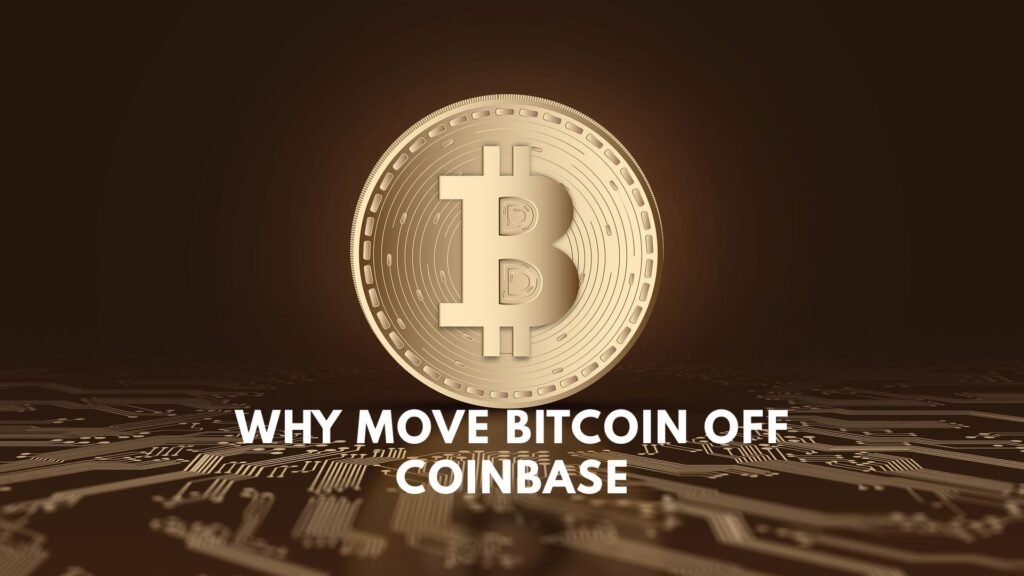How to Send Bitcoin from Coinbase: Updated Guide for 2025 — Sending Bitcoin (BTC) from Coinbase to your own wallet is a simple but crucial task. This step-by-step tutorial explains how to transfer Bitcoin safely, why it matters, and how to avoid common mistakes.
🔒 Why Move Bitcoin Off Coinbase?

Coinbase is a custodial exchange, meaning it holds your private keys for you.
Transferring Bitcoin to your own non-custodial wallet (hardware, mobile, or desktop) gives you full control over your crypto.
✅ Pros:
- You control your private keys.
- Protection from exchange hacks or freezes.
⚠️ Cons:
-
You are fully responsible for wallet backups and recovery phrases.
🧾 Before You Start: Quick Checklist
Make sure you’ve completed the following before sending BTC:
- ✅ You have the destination wallet’s Bitcoin address (not a username).
- ✅ The address is for Bitcoin on the Bitcoin network (not BCH or another token).
- ✅ You’ve backed up your wallet’s recovery phrase/private key.
- ✅ Your Coinbase account is verified and funded.
- ✅ You understand Bitcoin transactions are irreversible.
🪙 Step-by-Step: How to Send Bitcoin from Coinbase to a Wallet
Step 1: Open Your Receiving Wallet and Copy the BTC Address
- Open your wallet (hardware, mobile, or desktop).
- Select Receive and choose Bitcoin (BTC).
- Copy the address (starts with bc1, 3, or 1) or scan the QR code.
- Verify the first and last few characters—they must match after pasting into Coinbase.
💡 Tip: Never type an address manually. Always copy-paste or scan.
Step 2: Send a Small Test Transaction (Recommended)
If you’re transferring a large amount, test first with a small sum ($1–$5 worth of BTC).
Confirm it arrives safely before sending the full amount. This simple step can save you from major losses.
Step 3: Log in to Coinbase and Find the Send Option
- Log in to your Coinbase app or website.
- Go to Send/Receive or Portfolio → Bitcoin (BTC).
- Click or tap Send.
(UI layout may change, but the Send button is always in the Bitcoin section.)
Step 4: Enter the Recipient Address and Amount
- Paste the BTC address from your wallet.
- Double-check the first and last few characters.
- Enter the amount in BTC or fiat (USD, EUR, etc.).
- Optionally, add a note for your reference.
5: Choose the Network and Transaction Speed
- Network: Always choose Bitcoin (not Ethereum or other chains).
- Speed: Higher fees = faster confirmations. Choose based on urgency.
Step 6: Review All Transaction Details
Before you confirm, check:
- ✅ Recipient BTC address (start & end characters match)
- ✅ Amount and network = Bitcoin
- ✅ Coinbase fee and total
- ✅ You understand it’s irreversible once sent
Step 7: Confirm and Authenticate
Click Send Now.
Coinbase may request 2FA verification via email link, SMS, or authenticator code.
Complete this to broadcast your transaction.
Step 8: Wait for Confirmations
- After sending, Coinbase provides a Transaction ID (TXID).
- Use a block explorer (such as Mempool.space or Blockstream.info) to track progress.
- 1 confirmation ≈ 10 minutes on average.
- Wait for 3–6 confirmations for large transfers.
🔍 How to Verify the Transfer
- Copy the TXID from Coinbase.
- Paste it into a Bitcoin block explorer.
- Check the confirmation count and final balance in your receiving wallet.
If the transaction appears confirmed but not in your wallet, try refreshing or rescanning your wallet’s blockchain.
💰 Bitcoin Fees and Transaction Timing
- Coinbase charges a network (miner) fee, not a platform fee.
- Network fees vary based on congestion.
- Average confirmation time: ~10 minutes, with longer wait times during high traffic.
- Coinbase sometimes batches transactions, which can delay initial broadcast slightly.
⚠️ Common Mistakes (and How to Avoid Them)
❌ Sending to the wrong network—Always select the Bitcoin network.
❌ Typing the address manually—Use copy & paste only.
❌ Skipping test transfer—Always test for large sums.
❌ Phishing websites—Use the official Coinbase app or URL only.
🧩 Troubleshooting Tips
⏳ Transaction pending too long?
- Check TXID on a block explorer.
- If “unconfirmed,” it’s likely due to low fees or high congestion.
📭 Not received after confirmation?
- Restart or resync your wallet.
- Verify the receiving address and TXID.
🚫 Sent to the wrong address?
- If sent to another exchange, contact their support ASAP.
- If sent to a random or invalid address, it can’t be reversed.
🔐 Security Best Practices
- Use a hardware wallet for long-term holdings.
- Keep recovery phrases offline and never share them.
- Enable two-factor authentication (2FA) on Coinbase.
- Keep your wallet and device updated.
- For large amounts, split transfers into smaller batches.
✅ Final Checklist Before Hitting “Send”
- Copied the correct Bitcoin (BTC) address
- Tested with a small amount (if a large transfer)
- Selected Bitcoin network
- Verified transaction details
- Ready with Coinbase 2FA

